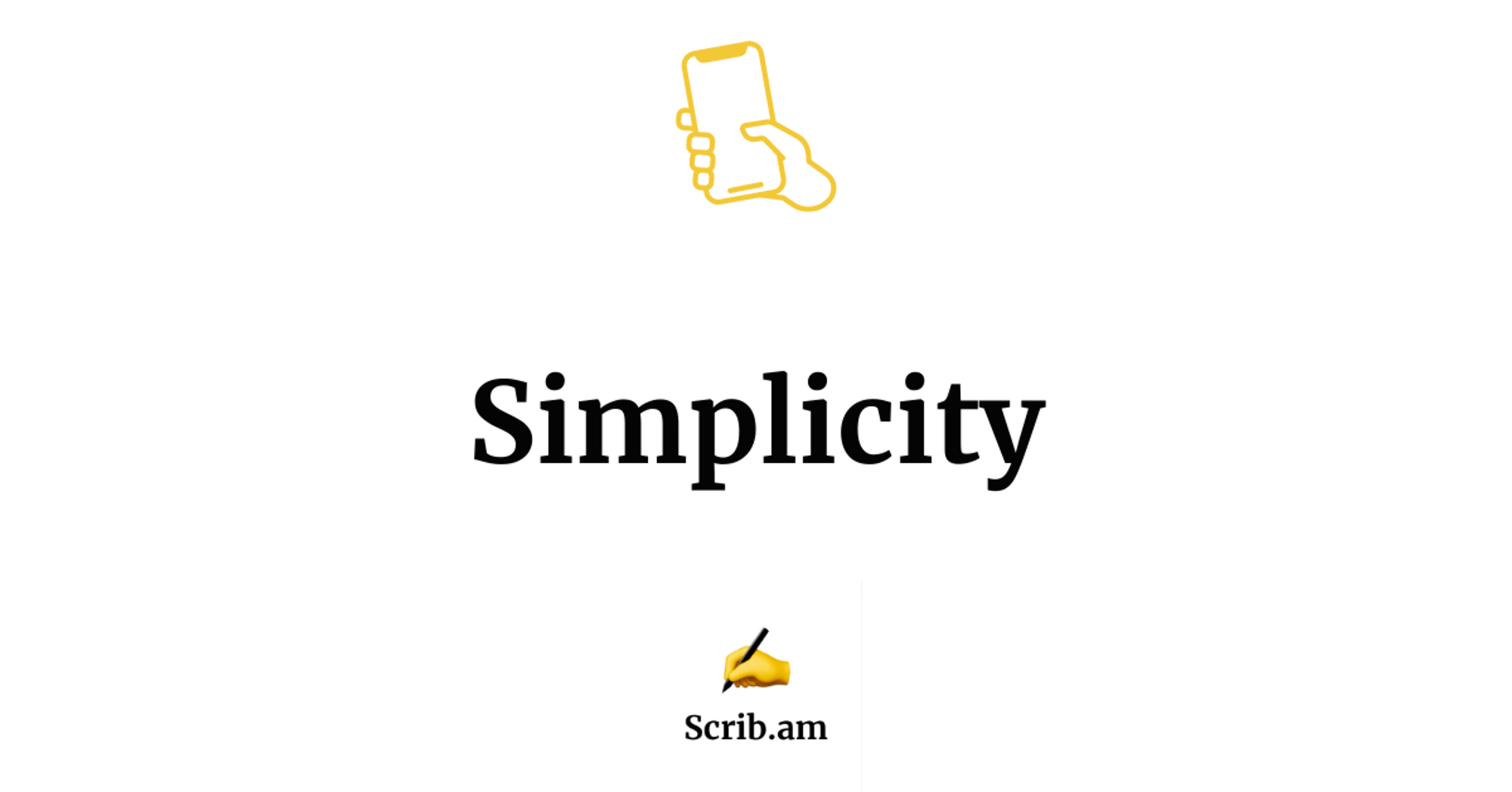Steve Jobs declared in 1998:
Simple can be harder than complex: you have to work hard to get your thinking clean to make it simple. But it’s worth it in the end because once you get there, you can move mountains.
Along the same lines, Chris Sacca elaborated ten years later:
It’s easy to dismiss simple things in a world which values complexity.

If you assume that only smart people can design complex things, you tend to overvalue the intricate, which supposedly requires more expertise than the plain.
But ultimately, the most beautiful equations look simple.
Simplicity is an illusion
This being said, products which appear simple and easy to use on the surface often require a high degree of sophistication under the hood.
The iPhone is a great example: super intuitive to use, leveraging unprecedented feats of engineering beneath the surface.
Today’s AI tools are conversational, such as GPT-3 by OpenAI, triggered by a simple text prompt. They’re the result of sophisticated models, intense learning processes and immense computing power.
In a quest for convenience, engineers are constantly reducing the apparent complexity.
The best products feel like magic. But it’s just an illusion.
Even the most simple inanimate objects around you are immensely complex underneath: there’s a lot happening in a static stone to help it to maintain the equilibrium with its environment. It’s not life as we usually define it (harnessing energy for reproductive purposes) but it’s definitely activity.
Simplicity is an abstraction
Just imagine a world where you would be confronted with the subatomic intricacies of your environment. It would be overwhelming, unbearable.
We need an interface.

All simple things are useful abstractions which enable us to interact with complex systems.
Designing a simple UI (User Interface) is hard but it’s worth the effort.
Simplicity comes from subtraction
Architect Ludwig Mies van der Rohe (1886–1969) adopted the motto "Less is more”.
The concept of minimalist architecture is to strip everything down to its essential quality and achieve simplicity
“Simplicity is the key to excellence”, said designer Dieter Rams.
In his 10 Design Principles, he stressed that good design makes a product understandable.
Minimalists also argue that simplicity comes from subtraction.
The path to misery is cobbled with addition. The path to peace is uncovered with subtraction.
It doesn’t mean that everything deserves to be subtracted.
At some point, subtraction creates confusion.
You’ve got to know where to stop to preserve the usefulness of your design.
Simplicity leads to chaos
Let’s finish this article with a contrarian argument.
In a very good piece called “The Problem with Simplicity”, Miguel Clark Mallet argues that we often use the word simple for “efficient” or even “convenient”.
The problem is that our obsessive quest for instant simplicity also generates a lot of waste.
Miguel Clark Mallet gives the example of (rather simple) disposable razor blades which have been replaced by disposable plastic razors, much more convenient but also far less environment-friendly. In that sense, simplicity creates complexity.
Beyond moral considerations, you could say that’s it’s simply the expected path of evolution, as defined in the laws of physics.
Behind the surface, it’s the way our universe is expanding, towards chaos.
Simplicity is a form of temporary resistance.
Following the second law of thermodynamics, all things trend toward disorder, aka increased entropy. It seems counterintuitive but it’s just the way things are.
The increase of disorder or entropy is what distinguishes the past from the future, giving a direction to time.
Stephen Hawking, A Brief History of Time
Even if, on the surface, the universe might end in a seemingly ordered equilibrium (in a Big Freeze), under the hood it will be a dance of big soup of whizzing particles.
So when we’re attempting (or pretending) to design simple products, we’re just fighting temporarily against the laws of nature which push us towards chaos, while contributing inadvertently to the inevitable entropy, in a creative way.
The Second Law of Thermodynamics defines the ultimate purpose of life, mind, and human striving: to deploy energy and information to fight back the tide of entropy and carve out refuges of beneficial order. An underappreciation of the inherent tendency toward disorder, and a failure to appreciate the precious niches of order we carve out, are a major source of human folly.
Steve Pinker, Canadian-American cognitive psychologist, psycholinguist.
How beautiful is that?
Life goes on.


